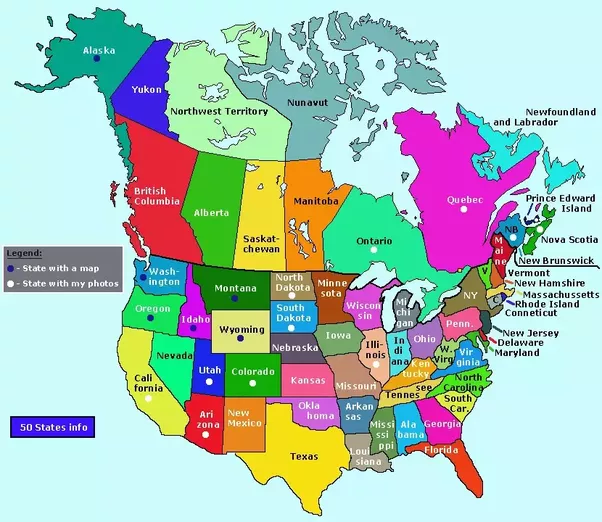
Emergency Agreements: Canada signs a "North American Stabilization Treaty" with the U.S., effectively ceding sovereignty in exchange for economic aid, debt relief, and political stability. Denmark and the U.S. finalize the Greenland purchase in parallel, formalizing the sale at the United Nations.
By Hans Wilder, Watertown NY
Scenario: Rapid North American Integration
Catalyst Events
- Canada’s Economic Collapse:
- A sudden crash in global commodity prices devastates Canada’s resource-based economy. Provinces like Alberta and Newfoundland face extreme debt crises, while federal social programs strain under reduced tax revenue.
- The Canadian dollar plummets, triggering inflation and public unrest. Calls for U.S. intervention grow as Canadians demand stability.
- U.S. Economic and Strategic Ambitions:
- The U.S. government sees an opportunity to expand its economic and geopolitical footprint by integrating Canada and purchasing Greenland.
- The Greenland acquisition aligns with the U.S.’s strategic Arctic ambitions, securing access to rare earth minerals, new shipping routes, and military advantages.
- Denmark’s Concession:
- Denmark agrees to sell Greenland for $10 billion amidst rising financial burdens of maintaining the territory and increasing pressure from geopolitical competitors like China.
Process of Integration
- Emergency Agreements:
- Canada signs a “North American Stabilization Treaty” with the U.S., effectively ceding sovereignty in exchange for economic aid, debt relief, and political stability.
- Denmark and the U.S. finalize the Greenland purchase in parallel, formalizing the sale at the United Nations.
- Legal and Constitutional Adjustments:
- The U.S. fast-tracks constitutional amendments to integrate Canadian provinces as states while recognizing Greenland as a U.S. territory.
- Canada’s Parliament dissolves, and provincial governments transition to state governments. The Supreme Court of Canada is absorbed into the U.S. judicial framework.
- Healthcare System:
- The U.S. announces a revolutionary single-payer healthcare system, covering all citizens and residents of the new North American Union, including Greenland.
- Canada’s existing healthcare infrastructure is used as a template for the system, but it is managed federally by the U.S., replacing provincial systems.
- Greenland’s limited healthcare services are rapidly expanded with U.S. investments.
- Currency and Economy:
- The Canadian dollar is replaced by the U.S. dollar within six months, stabilizing inflation.
- The U.S. federal government invests heavily in Canadian infrastructure to modernize roads, railways, and utilities, especially in economically depressed regions.
- Military Integration:
- The Canadian Armed Forces merge with the U.S. military, with personnel absorbed into equivalent roles. Arctic bases in Greenland and northern Canada become strategic hubs for U.S. operations.
- Greenland’s airfields and ports are upgraded for Arctic defense, cementing U.S. dominance in the region.
Logistics
Governance:
- Canada: Each province becomes a U.S. state, while territories like Nunavut gain territorial status similar to Puerto Rico or Guam. Quebec receives special cultural protections to ensure French language and heritage preservation.
- Greenland: Operates as a U.S. territory with a promise of eventual statehood if population and infrastructure grow sufficiently.
Economic Transition:
- U.S. federal agencies assume control of Canadian revenue collection and fiscal policy. High-debt provinces like Ontario receive federal bailouts tied to economic reforms.
- Greenland benefits from large-scale U.S. investments in mining, renewable energy, and infrastructure.
Healthcare Rollout:
- A federal agency, the “North American Health Administration,” is established to manage the single-payer system.
- Initial funding comes from increased corporate taxes, redirected military spending, and phased reductions in private insurance roles.
Cultural Adjustments:
- Bilingualism is federally recognized in Canada and parts of the U.S., with French-language services mandated in public institutions.
- Greenland’s Inuit population is granted protections for indigenous culture and self-governance.
Military and Defense:
- Arctic bases in Greenland and Canada are prioritized for deployment of advanced missile defense systems and climate research facilities.
- NATO allies support the integration, recognizing its strategic benefits for the Arctic and North Atlantic.
Implications
Domestic:
- Political Tensions:
- U.S. conservatives criticize the integration as costly and unnecessary, while progressives demand more aggressive protections for Canadian and Greenlandic cultures.
- Canadians face identity struggles, with some groups advocating for the restoration of independence.
- Healthcare:
- While the single-payer system reduces healthcare disparities, the transition sparks protests from private insurers in the U.S.
- Economic Boost:
- The integration spurs economic growth as U.S. companies expand into new markets in Canada and Greenland.
International:
- Geopolitical Shifts:
- The expanded U.S. becomes a dominant Arctic power, controlling vast natural resources and strategic shipping lanes.
- China and Russia react aggressively, increasing military presence in the Arctic.
- Allied Support:
- NATO applauds the U.S. for securing Arctic stability but urges caution in managing cultural sensitivities.
Long-Term Effects:
- The North American Union becomes the world’s largest economy, with unparalleled access to resources, technology, and global influence.
- Climate-driven migration into Canada and Greenland accelerates, transforming northern regions into economic hubs.
This rapid integration scenario highlights the challenges and opportunities of such a bold geopolitical move, driven by economic necessity and strategic ambition.



